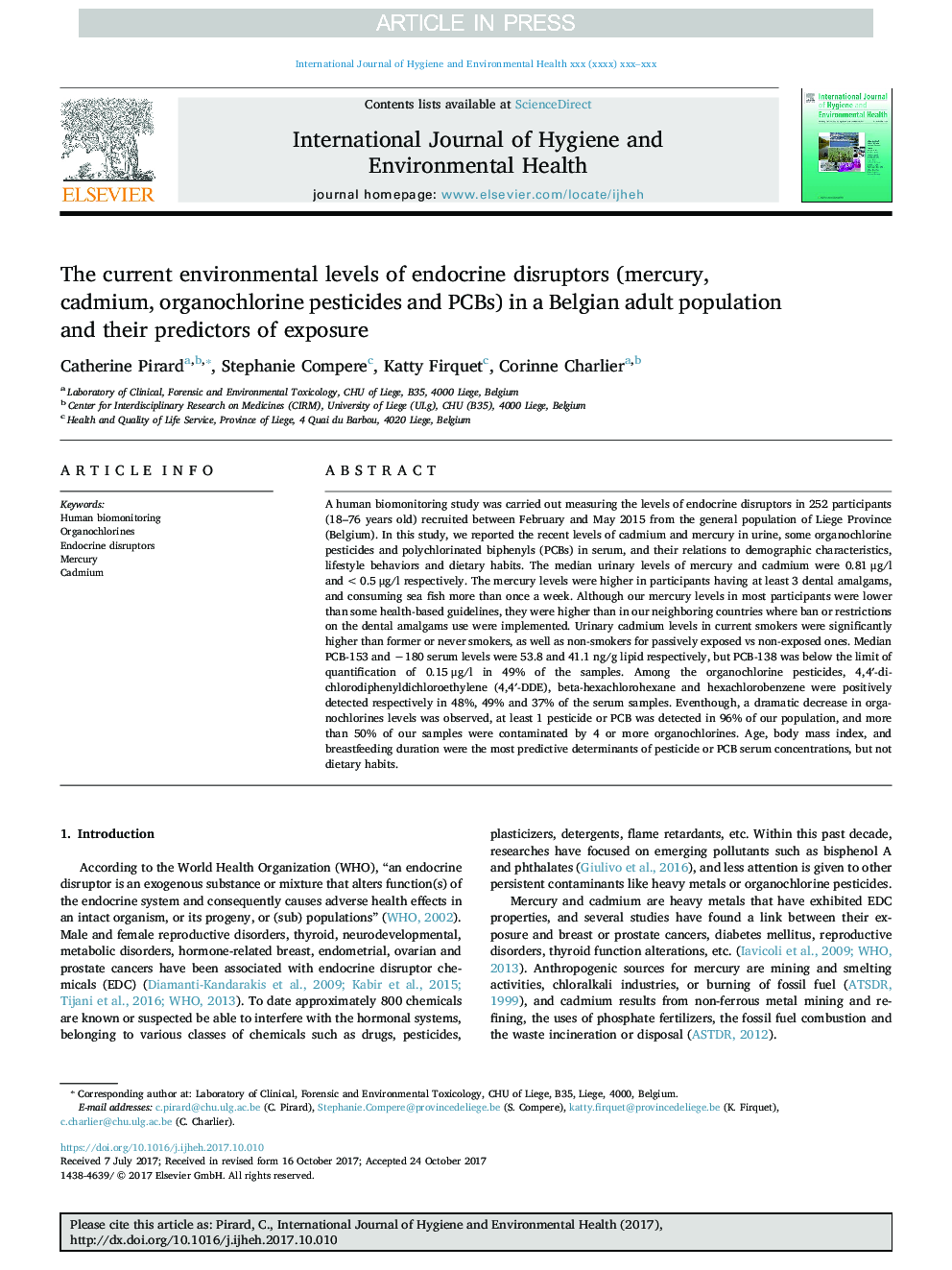| کد مقاله | کد نشریه | سال انتشار | مقاله انگلیسی | نسخه تمام متن |
|---|---|---|---|---|
| 8549707 | 1561867 | 2018 | 12 صفحه PDF | دانلود رایگان |
عنوان انگلیسی مقاله ISI
The current environmental levels of endocrine disruptors (mercury, cadmium, organochlorine pesticides and PCBs) in a Belgian adult population and their predictors of exposure
دانلود مقاله + سفارش ترجمه
دانلود مقاله ISI انگلیسی
رایگان برای ایرانیان
کلمات کلیدی
موضوعات مرتبط
علوم زیستی و بیوفناوری
علوم محیط زیست
بهداشت، سم شناسی و جهش زایی
پیش نمایش صفحه اول مقاله

چکیده انگلیسی
A human biomonitoring study was carried out measuring the levels of endocrine disruptors in 252 participants (18-76 years old) recruited between February and May 2015 from the general population of Liege Province (Belgium). In this study, we reported the recent levels of cadmium and mercury in urine, some organochlorine pesticides and polychlorinated biphenyls (PCBs) in serum, and their relations to demographic characteristics, lifestyle behaviors and dietary habits. The median urinary levels of mercury and cadmium were 0.81 μg/l and <0.5 μg/l respectively. The mercury levels were higher in participants having at least 3 dental amalgams, and consuming sea fish more than once a week. Although our mercury levels in most participants were lower than some health-based guidelines, they were higher than in our neighboring countries where ban or restrictions on the dental amalgams use were implemented. Urinary cadmium levels in current smokers were significantly higher than former or never smokers, as well as non-smokers for passively exposed vs non-exposed ones. Median PCB-153 and â180 serum levels were 53.8 and 41.1 ng/g lipid respectively, but PCB-138 was below the limit of quantification of 0.15 μg/l in 49% of the samples. Among the organochlorine pesticides, 4,4â²-dichlorodiphenyldichloroethylene (4,4â²-DDE), beta-hexachlorohexane and hexachlorobenzene were positively detected respectively in 48%, 49% and 37% of the serum samples. Eventhough, a dramatic decrease in organochlorines levels was observed, at least 1 pesticide or PCB was detected in 96% of our population, and more than 50% of our samples were contaminated by 4 or more organochlorines. Age, body mass index, and breastfeeding duration were the most predictive determinants of pesticide or PCB serum concentrations, but not dietary habits.
ناشر
Database: Elsevier - ScienceDirect (ساینس دایرکت)
Journal: International Journal of Hygiene and Environmental Health - Volume 221, Issue 2, March 2018, Pages 211-222
Journal: International Journal of Hygiene and Environmental Health - Volume 221, Issue 2, March 2018, Pages 211-222
نویسندگان
Catherine Pirard, Stephanie Compere, Katty Firquet, Corinne Charlier,